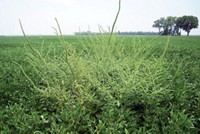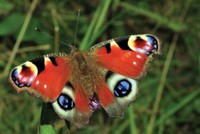Advertisement
Grab your lab coat. Let's get started
Welcome!
Welcome!
Create an account below to get 6 C&EN articles per month, receive newsletters and more - all free.
It seems this is your first time logging in online. Please enter the following information to continue.
As an ACS member you automatically get access to this site. All we need is few more details to create your reading experience.
Not you? Sign in with a different account.
Not you? Sign in with a different account.
ERROR 1
ERROR 1
ERROR 2
ERROR 2
ERROR 2
ERROR 2
ERROR 2
Password and Confirm password must match.
If you have an ACS member number, please enter it here so we can link this account to your membership. (optional)
ERROR 2
ACS values your privacy. By submitting your information, you are gaining access to C&EN and subscribing to our weekly newsletter. We use the information you provide to make your reading experience better, and we will never sell your data to third party members.
Pesticides
Neonicotinoids might harm butterflies too
The insecticide contributed more to 21st-century butterfly declines in the Midwest US than any other environmental variable
by Max Barnhart
June 25, 2024

Some people believe that when a monarch lands on you, it’s a sign of positive change to come. Yet over the past several decades, monarch populations have experienced much negative change, undergoing considerable decline. Scientists attributed 20th-century population declines to the loss of milkweed, which is the preferred host plant for monarchs. Now, new research published in PLOS ONE suggests that at the beginning of the 21st century, the adoption of neonicotinoid-coated crop seed became the biggest driver in the further decline of monarchs and other butterfly species in the American Midwest (2024, DOI: 10.1371/journal.pone.0304319).
Neonicotinoids were first introduced in the 1990s and gained widespread use in the early 2000s. Scott Swinton, an agricultural economist at Michigan State University and author on the paper, says that farmers started planting neonicotinoid-coated soybean seed to fight aphid infestations, but this practice also affected other insects. Substantial evidence implicated the adoption of neonics, as they’re often called, in honeybee colony collapse disorder. Neonics were banned by the European Union in 2018, and a few states in the US limited their use. But exemptions in Europe and few restrictions elsewhere mean that neonics are still widely used today.
And now this new research implicates neonics in the decline of monarchs and other butterfly populations too. The researchers examined pesticide and herbicide usage, along with weather and other relevant variables, at a county level throughout the midwestern US from 1998 to 2014. From the data, the research team concluded that the shift to widespread neonicotinoid use had a “strong, negative association with butterfly abundance and species richness”—more so than any of the other variables evaluated, including yearly variations in weather, according to the research paper. Butterfly populations tended to decline faster in counties where neonic-coated seeds were planted compared to counties where they were not.
It’s a curious and somewhat surprising conclusion given that scientists previously thought butterflies weren’t strongly affected by neonic usage, according to Sonia Altizer, an entomologist at the University of Georgia who wasn’t affiliated with the study. “Butterflies seem to be more tolerant [of neonics] when exposed in the lab.” Despite this, Altizer says the association between neonic usage and butterfly declines was “long suspected” and that this is an important study.
Leslie Ries, an ecologist at Georgetown University and author on the paper, acknowledges the differences between the lab studies and their data, calling it a “disconnect” and saying that something must be interacting with neonics in the field to cause this decline. But Ries also says that since 2014, the US no longer requires reporting on neonic usage, making it nearly impossible to continue this research. “Most of the last 10 years have been the hottest on record. If we did the same study from 2015 to 2024, we might see a different result [because of climate change], but we can’t do that study because we don’t have the neonicotinoid data,” she says.




Join the conversation
Contact the reporter
Submit a Letter to the Editor for publication
Engage with us on Twitter